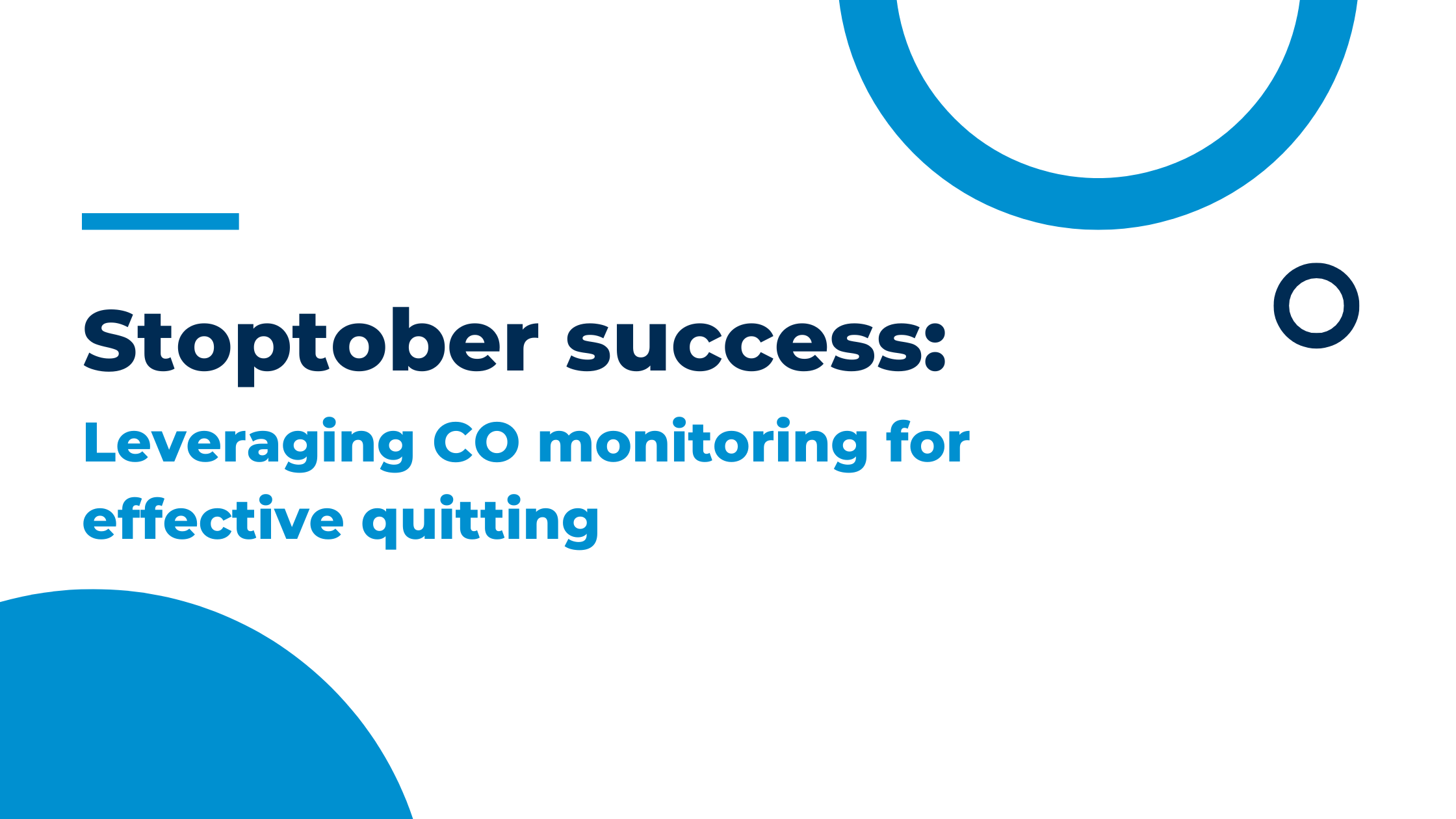Stoptober, launched by Public Health England (PHE) in 2012, is a national smoking cessation campaign that takes place every October, designed to encourage smokers to quit smoking for 28 days. Research has shown that if you can stop smoking for 28 days, you are five times more likely to quit for good1. However, quitting smoking is challenging; it is essential to know what support tools are available to aid a quit attempt. In this blog, we will examine the role of carbon monoxide (CO) monitoring in a quit attempt.
Why CO monitoring matters

CO is a harmful gas formed through incomplete combustion, which includes the burning of tobacco. It is a colourless and odourless gas commonly found in cigarette smoke. When inhaled, CO is absorbed into the bloodstream through the lungs, attaching to the haemoglobin in red blood cells. This blocks the oxygen they carry, starving the body of the oxygen it needs, leading to various health complications and smoking-related diseases2. The benefits of quitting can be seen fairly quickly after the last cigarette, with CO levels dropping to those of a non-smoker within 48 hours3.
How CO monitoring devices work
CO monitoring is a quick, easy and non-invasive way to establish a person’s smoking status by measuring CO levels in parts per million (ppm) in exhaled breath. Devices like the Smokerlyzer® range are portable and compact, making them easy to use in both clinical and home settings. CO monitoring provides real-time feedback, enabling users to view their smoking-related CO levels.

The psychological benefit of real-time feedback

When embarking on a quit-smoking journey, being able to track CO levels as they drop throughout the attempt visually motivates the user to continue and reinforces their reason for quitting. In a study by Beard and West (2012) on the effectiveness of personal carbon monoxide monitoring, it was found that out of 10 smokers, “7 of the smokers reported that they felt as though the devices had reduced their cigarette consumption… 6 smokers reported a lower nicotine dependency relative to baseline. Over the 6 weeks, there appeared to be a significant decline in the number of cigarettes smoked per day4”.
Smokerlyzer® range
The Smokerlyzer® is a range of CO monitoring devices designed to aid smoking cessation. The range consists of:
Micro+™ Smokerlyzer® – a CO breath and foetal device to help people stop smoking. Results shown in exact parts per million (ppm), carboxyhaemoglobin (%COHb) and foetal carboxyhaemoglobin (%FCOHb).
PiCO™ Smokerlyzer® – a breath CO device to help people stop smoking, results shown in exact ppm and %COHb.
PiCObaby™ Smokerlyzer® – a breath CO device for pregnant women to help them stop smoking. Results shown in exact ppm, %COHb and %FCOHb.
iCOquit® Smokerlyzer® – a personal CO device, to help you quit smoking, one breath at a time. Results shown in

Incorporating CO monitoring into your Stoptober plan
When deciding to quit smoking, it is advisable to speak with a healthcare professional who can discuss the tools available to assist a quit attempt. CO monitoring devices can be found in smoking cessation clinics across the world, and smoking cessation advisors will be able to provide a structured plan for a quit-smoking attempt.
Stoptober is just the beginning
Whilst Stoptober is the perfect excuse for anyone to embark on a quit smoking attempt, it shouldn’t end on October 31st. CO monitoring provides visual progress during a quit attempt, empowering users to continue their efforts toward a smoke-free life. To find out more about what quit smoking services are available, visit the NHS website here.
The best start to a quit smoking attempt is by combining commitment, support, and CO monitoring. For more information on smoking cessation and the Smokerlyzer® range, visit the website here.
References
- Stop Smoking this Stoptober and You will be Five Times More Likely to Quit for Good! | North Central London Integrated Care System [Internet]. Nclhealthandcare.org.uk. 2025 [cited 2025 Jun 17]. Available from: https://nclhealthandcare.org.uk/news/stop-smoking-this-stoptober-and-you-will-be-five-times-more-likely-to-quit-for-good/
- Department of Health and Aged Care. Effects of smoking and tobacco [Internet]. Australian Government Department of Health and Aged Care. 2024. Available from: https://www.health.gov.au/topics/smoking-vaping-and-tobacco/about-smoking/effects
- NHS. Quit smoking – better health [Internet]. NHS.UK. NHS; 2020. Available from: https://www.nhs.uk/better-health/quit-smoking/
- Pilot Study of the Use of Personal Carbon Monoxide Monitoring to Achieve Radical Smoking Reduction. Journal of Smoking Cessation. Emma Beard and Robert West (2012). [cited on 17/6/25] Available from https://web.archive.org/web/20180721211143id_/https://www.cambridge.org/core/services/aop-cambridge-core/content/view/0BAC2289E42E9C31C892D54BF7980237/S1834261212000011a.pdf/div-class-title-pilot-study-of-the-use-of-personal-carbon-monoxide-monitoring-to-achieve-radical-smoking-reduction-div.pdf

